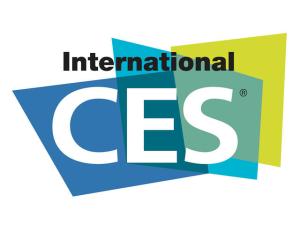Palm Inc. of Sunnyvale was the first company to make a big splash at the Consumer Electronics Show in Las Vegas Thursday when officials unveiled a new phone called the "Palm Pre."
The phone looked vaguely similar to an iPhone. Company officials demonstrated its features during a presentation Thursday morning.
The unveiling immediately sparked reaction from observers, one of whom called the new product a "big-time shot at the iPhone."
Technology reporter Scott Budman has a blog with updates on the Consumer Electronics Show.
The economic downturn is expected to temper the normally dizzying extravaganza, and some attendees are wondering if the whole technology trade show business is past its peak.
"I'm talking to the companies who are sending people, and they're sending two instead of 10," said Forrester Research analyst James McQuivey. "It's going to be a shadow of itself."
Last year, 140,000 people went to the show, and there were 2,700 exhibitors. The Consumer Electronics Association, which is hosting, expects the same number of exhibitors this year, but on a slightly smaller floor space: 1.7 million square feet, or about 29 football fields. That's down three football fields from last year.
Jason Oxman, senior vice president of industry affairs at CEA, said several companies have asked to buy meeting-room space, rather than booths on the showroom floor. They're more focused on meeting customers and doing business than putting on large displays, he said.
That fits with a cooler economic climate. The booths are chapels to conspicuous consumption where companies one-up each other with bigger and badder gadgets, like the 150-inch plasma TV Panasonic Corp. displayed last year.
U.S. & World
It wasn't until the holiday shopping season, after the credit crunch had turned into a full-blown crisis, that consumers really pulled back. U.S. sales of electronics and appliances fell almost 27 percent from Nov. 1 to Dec. 24 according to SpendingPulse, a division of MasterCard Advisors, though appliances probably saw a greater decline than electronics. Sales of TVs and laptop computers held up relatively well, according to NPD Group, but there was no new product category to energize the market like GPS units did the year before. And with no quick economic recovery in sight, industry watchers expect gadget makers' pain to continue. Research firm DisplaySearch sees sales of flat-panel TVs falling in 2009 for the first time since they appeared on store shelves a decade ago. Industry bellwether Sony Corp. said in December that it would cut 8,000 of its 185,000 jobs, shut plants and reduce its investment.
Windows 7 Says Its Almost Ready for Prime Time
That message comes from Microsoft CEO Steve Ballmer at the opening of the Consumer Electronics Show in Las Vegas.
Ballmer announced a nearly-final test version of Windows 7 will be available tomorrow for regular PC users to download and play with.
The operating system could be available on new PCs within a year. It uses much the same underlying technology as the much-maligned Vista. But Windows 7 is supposed to make it easier to install add-on devices and spit out fewer annoying warnings.
The CEO also announced Microsoft has formed a five-year partnership with Verizon Wireless that calls for Live Search to be added to all Internet-ready Verizon cell phones in the U.S.
Who Says Polraoid Film is Dead?
A strange little ritual used to go along with Polaroid cameras. The shooter would grab the print as it came out of the camera and wave it in the air, as if that would stimulate the chemicals and make the picture appear faster. It didn't. Yet it felt dumb to just stand there, waiting for the picture to develop.
Polaroid stopped making film packs last year, so this little piece of tech culture will soon be just a memory. But just as the film-based Polaroid camera is fading away, along comes its digital replacement.
That's right: Polaroid was set to announce Thursday at the International Consumer Electronics Show that it is introducing a digital camera that produces prints right on the spot. You can even call them "instant" prints, but they take nearly a minute to appear, so they're only as "instant" as the old film prints.
Essentially, the $200 PoGo is a camera that contains a built-in color printer. It produces 2-by-3 inch photos by selectively heating spots on specially treated paper. It has nothing to do with the old chemical Polaroid process, but the prints convey some of the same Pop Art charm: They're grainy and the colors are slightly off, with faces tending toward a deathly blue-green.
The camera is a successor to a standalone printer Polaroid put out last summer, designed to connect to camera phones and digital cameras. When I reviewed it, I noted that if Polaroid combined the printer with an image sensor and an LCD screen, it would be a resurrection of the instant camera. It turns out that's exactly what Polaroid was working on.

|
NBC's CES Coverage | CES on the Web |



